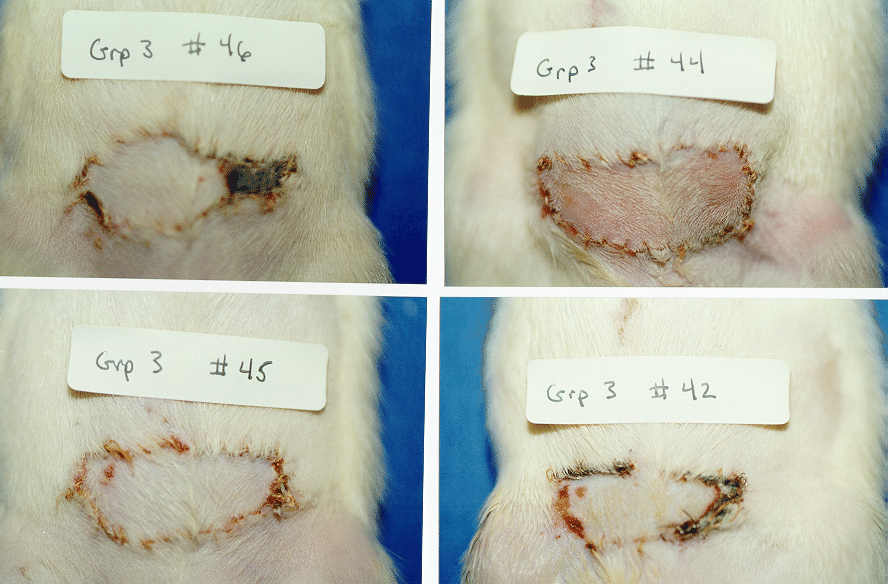Wednesday, October 29, 2003
3297
P10: Improvement of Tram Flap Viability Using hVEGF Induced Angiogenesis
ABSTRACT: Despite the success with TRAM flap breast reconstruction, ischaemia-related complications including fat necrosis and partial flap loss continue to occur in 5 to 28 percent of reported series . The associated vascular problems of the TRAM flap, stimulated several authors to study the effect of surgical delay, aiming to improve the viability of the flap.The present study was designed to investigate the effect of VEGF in the induction of angiogenesis in the TRAM flap model and to compare its effect to the surgical delay model. Methods : We used the rat model to demonstrate the effect of VEGF angiogenesis. Thirty male Sprague-Dawley rats were individually assigned to one of six groups (n= 5 in each group). One control group and five delay groups were established. We used a variety of flap delay techniques to increase the viable surface area of the flap. Microangiography was performed on 6 rats (one from each of the 6 groups). Angiography was performed after 10 days of the delay procedure just prior to TRAM flap elevation. Results: The flap mean viable surface area for the control group was 50 %. The surgical delay group had a mean of 83 % viability. The group with the highest percentage of viable flap surface area was group 3 in which both surgical delay and I.M injection of VEGF were used (96.0 % mean flap viability) .The mean viable flap surface area in the other study groups were 90.6%, 87%, 90.6% respectively. Statistically significant differences were obtain in all groups in comparison to the control group (p<0.05). (Figure 1-6) However, there were no significant differences among the five treatment groups. The microangiography study demonstrated an enhanced vascularity within the flap in the study groups compared to the control group. (Figure 7). Discussion: Growth factor induced angiogenesis as a method of augmenting tissue survival has been investigated by several authors. VEGF contrasts with most previously described angiogenic growth factors in its high-affinity to endothelial cell receptors. We investigated whether ischemia related problem of TRAM flap (fat necrosis and partial skin necrosis) could be improved through the induction of angiogenesis as a result of pretreatment of the flap with VEGF. Statistically significant differences were found in all treatment groups compared to control. The current concern is the systemic manifestations of the VEGF injection; a global unchecked angiogenesis could be an undesirable effect. Our current research focuses on accurately delivering and measuring the local and the systemic effects of VEFG.
Conclusion : The findings reported in the present study indicate that VEGF induced angiogenesis proved to be beneficial and statistically significant in the setting of TRAM flap viability in the rat model when compared to the control group. Figure legends
Figure 1: Surgical delay and intra-muscular injection group.

See more of Posters
Back to Plastic Surgery 2003 Complete Scientific Program
Back to Plastic Surgery 2003 Meeting home
